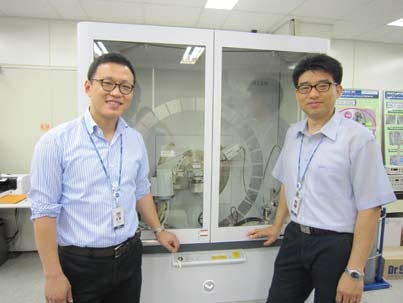The Korea Electronics Technology Institute (KETI) is a government body leading research into new electronics for Korean companies such as Samsung SDI. One of its projects was the development of a new Li-ion rechargeable battery. This research was based at the Advanced Batteries Research Center (ABRC), which forms part of KETI. Success in this project helped provide more powerful and lighter power cells for mobile phones, laptops, electric cars, and a range of other portable devices.
Login or create an account to read how KETI used the Empyrean XRD platform, equipped with an in-operando electrochemical cell, to understand the battery degradation mechanisms, and develop rechargeable batteries with improved lifetime, superior charge/discharge cycling and low discharge losses.

Find out how Malvern Panalytical can enhance battery research and production with the best analytical solutions.
To read the full customer story, please login or create a free account.
The Korea Electronics Technology Institute (KETI) is a leading government body engaged in the research and development of new electronics and sustainable energy solutions for Korean companies such as Samsung SDI. Realizing the importance of next generation Li-ion batteries in portable electronics, electric cars and energy storage, KETI started an “Advanced battery research centre (ABRC)” dedicated to the battery research with pilot scale cell production facility, within its Smart Energy Manufacturing R&D division. Goal of this project is to provide more powerful and lighter battery cells for mobile phones, laptops, electric cars and a range of other portable and energy storage devices.

Dr. Cho Woo Suk (left) and Dr. Kim Jeon Soo from KETI leading the research into the secondary battery
While developing new battery materials with varying chemistry, it is important to understand the stability of these materials when cycled in a battery cell. Many materials look promising in terms of high energy density and discharge capacity, but undergo a rapid capacity decrease upon cycling. Most times the capacity decay can be traced back to the structural stability of these materials during charge-discharge cycles. Key focus of our research is to enhance the structural stability of cathode materials to improve the discharge profile over the lifetime of the battery. Changes in chemistry of cathode materials induce critical changes in the crystalline structure of the electrode materials and these need to be closely monitored. XRD is used as the first-choice analytical technique to monitor important parameters like:
The Empyrean platform, equipped with an in operando electrochemical cell, helps us in understanding the battery degradation mechanisms, and develop rechargeable batteries with improved lifetime, superior charge/discharge cycling and low discharge losses.